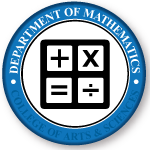Author ORCID Identifier
Document Type
Dissertation
Publication Date
8-2015
Abstract
Integer Programming is used to solve numerous optimization problems. This class of mathematical models aims to maximize or minimize a cost function restricted to some constraints and the solution must be integer. One class of widely studied Integer Program (IP) is the Multiple Knapsack Problem (MKP). Unfortunately, both IPs and MKPs are NP-hard, potentially requiring an exponential time to solve these problems.
Utilization of cutting planes is one common method to improve the solution time of IPs. A cutting plane is a valid inequality that cuts off a portion of the linear relaxation space. This thesis presents a new class of cutting planes referred to as merged knapsack cover inequalities (MKCI). These valid inequalities combine information from a cover inequality with a knapsack constraint to generate stronger inequalities.
Merged knapsack cover inequalities are generated by the Merging Knapsack Cover Algorithm (MKCA), which runs in linear time. These inequalities may be improved by the Exact Improvement Through Dynamic Programming Algorithm (EITDPA) in order to make them stronger inequalities. Theoretical results have demonstrated that this new class of cutting planes may cut off some space of the linear relaxation region.
A computational study was performed to determine whether implementation of merged knapsack cover inequalities is computationally effective. Results demonstrated that MKCIs decrease solution time an average of 8% and decrease the number of ticks in CPLEX, a commercial IP solver, approximately 4% when implemented in appropriate instances.
Recommended Citation
Vitor, Fabio, "Improving the solution time of integer programs by merging knapsack constraints with cover inequalities" (2015). Mathematics Faculty Publications. 68.
https://digitalcommons.unomaha.edu/mathfacpub/68


Comments
A THESIS submitted in partial fulfillment of the requirements for the degree MASTER OF SCIENCE Department of Industrial and Manufacturing Systems Engineering, College of Engineering, KANSAS STATE UNIVERSITY, Manhattan, Kansas.
http://hdl.handle.net/2097/19226
The author holds the copyright to this work. Any reuse or permission must be obtained from the author directly.